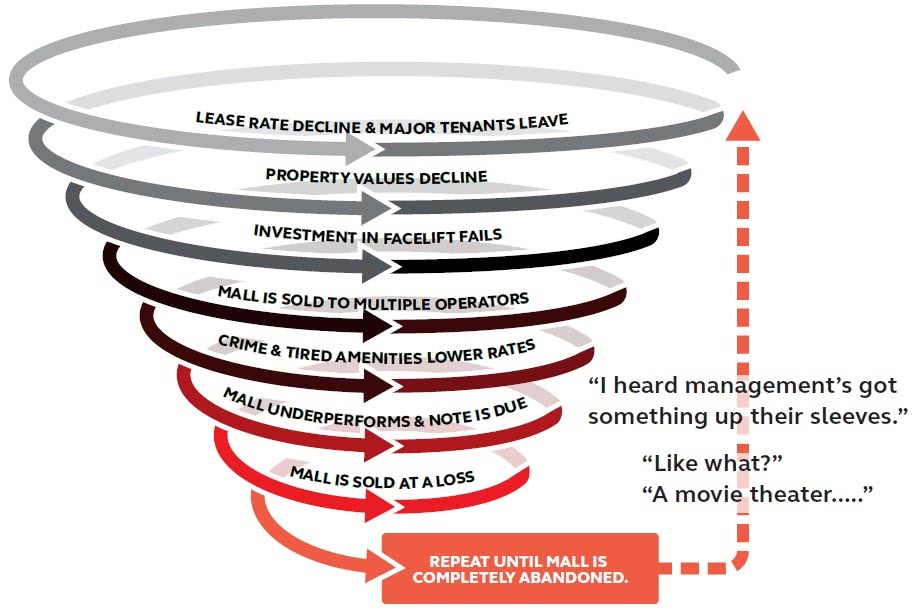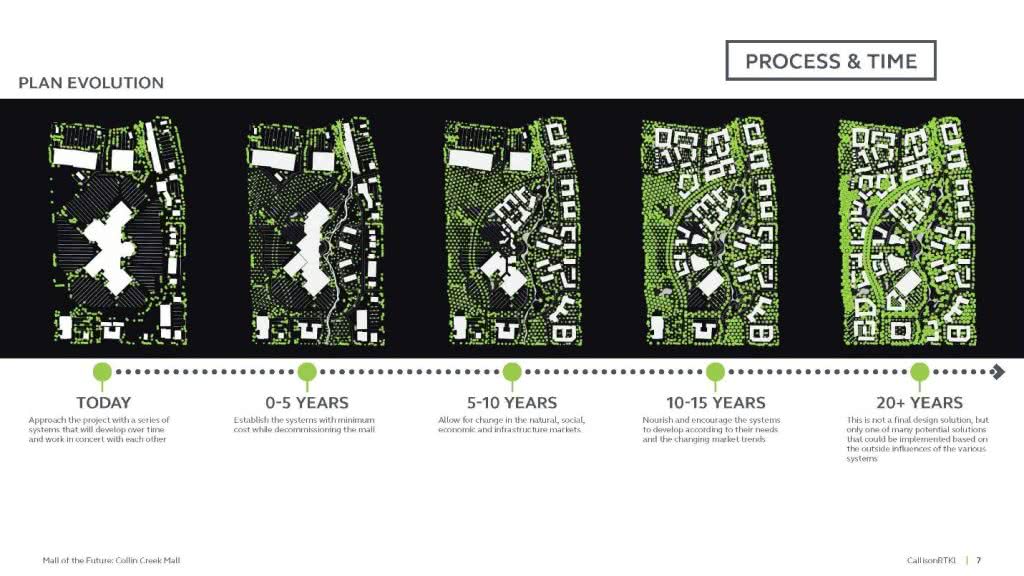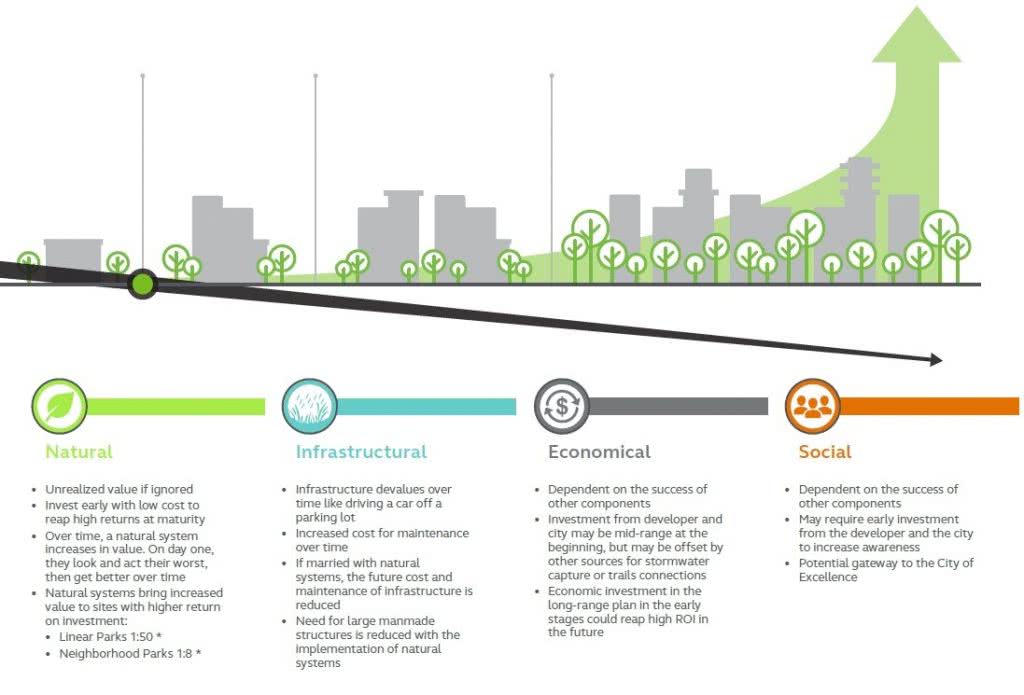
Pave Paradise, Put Up a Parking Lot?
CallisonRTKL’s Emily Drake recaps a Texas ASLA Conference panel discussion with planning and urban design colleagues Erich Dohrer and Ken Howell and Peter Braster, Director of Special Projects for the City of Plano, examining how the “Mall of the Future” can rethink the relationship between the built and natural environments.
Adapt or die: that is the ultimatum faced by the big regional shopping mall of days gone by. When CallisonRTKL put together our Mall of The Future forecast a little over a year ago, we challenged ourselves to think about what these buildings could become and how they could meet the needs of not only the modern shopper but the communities in which they dwell.
Underlying the many conclusions about what the Mall of the Future might look like was the consensus that it is more than a building, just as today’s shopping experience is more than a simple transaction. We no longer live in a material world, but an experiential world, and the mall must function as more than a structure for housing consumer goods—particularly in an age where it is often easier and more convenient to shop online. And reimagining the mall requires a multidisciplinary design approach.

So, while it may seem odd for landscape architects and urban planners to sit on a panel and pontificate about how to save retail, last week’s Texas ASLA Conference saw us discuss the real difficulties of redevelopment for these large sub-urban sites, the importance of a context-sensitive design approach and the search for intrinsic value in every site. Specifically, we looked at one recent project that proves that repurposing a shopping mall from the outside in can yield some pretty interesting results: a systems approach that stitches together the social fabric of a city and ensures the site’s value over the long haul at the same time.
The site is Collin Creek Mall in Plano, Texas. At its inception in 1981, it captured the spirit of the suburban American lifestyle and set the standard for big regional enclosed malls. Now, with the mall in decline, ownership divided and a major anchor tenant already departed, the site is poised to become a gateway to the city at its southern boundary but is disconnected from downtown by US Highway 75.
In our efforts to hit “refresh” on Collin Creek, we looked at the mall not just as a mall or even as an outdoor shopping center. Instead, we conducted an honest analysis of the site’s inherent value with an eye toward reconciling the built environment with the natural environment and determining which uses were the best fit.

Rather than wait on inevitable decline and abandonment, our approach entails strategic interventions over time to slowly decommission functionally obsolete sections of the mall while simultaneously making key investments that supports the long-term viability and financial stability of the site. In the case of Collin Creek, part of this effort was to revive the existing Spring Creek—covered up by the mall’s construction more than three decades ago—and to connect this to a series of open spaces and parks that can play host to recreation and events while providing opportunities for synergy with adjacent retail and entertainment.
Traditional malls invested heavily in infrastructure that, like driving a new car out of the dealership’s parking lot, devalues steadily over time, and economic investment, which can be unpredictable and depends on the success of other components. The idea for the Mall of the Future is to harness the power of natural systems, which require investment up front but reap higher ROIs over time.

The result? These natural systems can bolster the viability of economically-driven infrastructure and, in turn, encourage continued social investment. It also gives the overall design solution a dose of flexibility that allows for changes in market demand, housing trends, technological advancements and infrastructural adjustments.
Identifying the origin of ownership to pitch and execute repositioning plans can be very difficult within the existing mall landscape, and the uncertainty of Collin Creek’s future remains tied to the city’s efforts to identify where ultimate ownership and authority lie. But one thing is for certain: as Albert Einstein famously said, “We can’t solve problems by using the same kind of thinking we used when we created them.” To that end, reviving these sites means looking at its context from a different perspective—one that strives to create long-term social, environmental and economic value.
Other team members involved in the Collin Creek Mall of the Future design study include: Camila Felix de Simas, Sarah Kimes, Kayci Murphy and Channing Braun. The project won the 2017 Texas ASLA Professional Award of Excellence.

Great article, Emily!